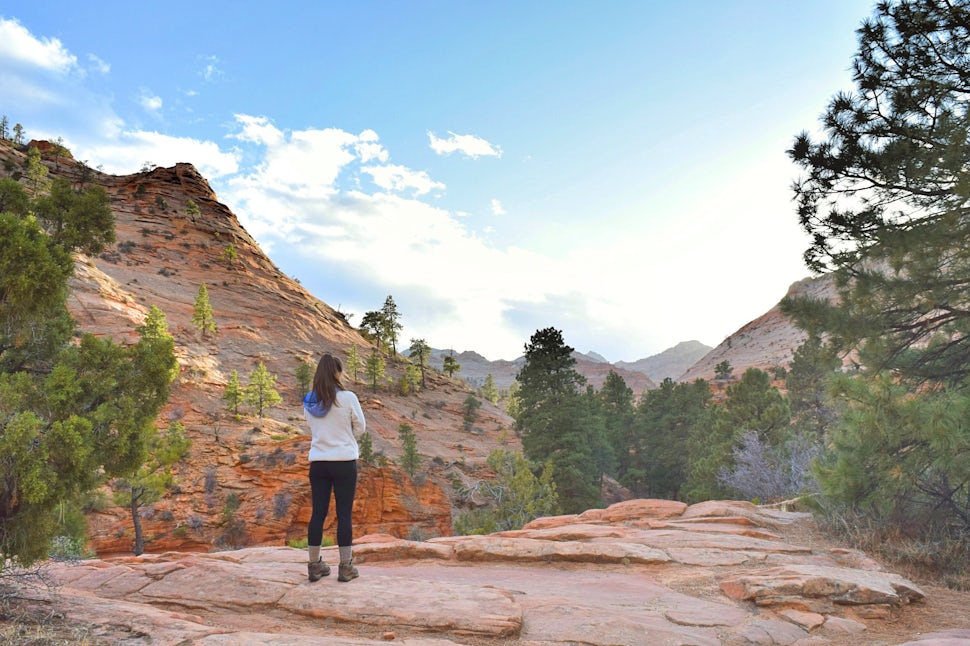Cotton: Friend or Foe on the Trail?
Have you ever heard the phrase "cotton kills?" There may be some truth behind it...

Everyone has a favorite cotton shirt. You know, that one slightly oversized, soft as butter t-shirt that's your go-to for getting a good night's sleep or vegging out on the couch? I'm always temped to grab that comfy shirt when I head to the mountains but here's why I never take it.
If you've ever taken an outdoor course or if you grew up in the outdoors you've probably heard the phrase "cotton kills." Sounds a little intense but there really is some truth behind the saying.
Do you like wearing your favorite cotton t-shirt while hiking?
Cotton, by nature, very easily absorbs water and is very slow to dry. "Water" can include perspiration that inevitably builds up on your skin while partaking in physical activity or rain/snow/sleet/etc. On the flip side, synthetic materials like polyester, wick moisture away from your skin to keep you dry and comfortable. According to the Appalachian Mountain Club, some forms of cotton absorb up to 27 times their weight!
So why do I care so much if your cotton shirt is soaking up sweat or water? Yeah it's getting a little bit heavier, but who cares? Well, it's because wet clothing conducts heat away from your body 25 times faster than dry clothing, and cotton loses 95% of its thermal properties when it becomes wet. So, wet cotton can make you much colder and is a recipe for contracting hypothermia.
Hypothermia is the real issue here. So lets talk about that:
Hypothermia occurs when the body loses heat more rapidly than it's able to produce heat and the body's temperature falls below 95 degrees. It can result in loss of physical limbs or body parts and it can result in death when untreated.
Most people only think hypothermia happens to people who get caught in insane blizzards in the Rocky Mountains while trying to stay warm at night. Nope! Hypothermia often occurs to unsuspecting hikers during marginal weather in the warmer months. According to Mountaineering First Aid, "Many hypothermia cases are reported in wet, windy weather with temperatures well above freezing." Most people going out for hikes during the warmer months, especially during the summer, rarely ever have hypothermia cross their minds or think to bring along warm extra layers. If you are caught in inclement weather during the summer - say a thunderstorm rolls in and the temperature drops twenty degrees in a matter of ten minutes - and you have no way to shed your cotton t-shirt and put on dry, warm layers, you're putting yourself at risk! Getting wet and staying wet, even in above-freezing temperatures can rapidly cool your body as a result.
So, is cotton friend or foe while out on the trail? I would say foe. Cotton is wonderful to cozy up in while you're relaxing at home or cuddled up in your sleeping bag but should be left at home or put away for hikes in all seasons.
What are your thoughts?

We want to acknowledge and thank the past, present, and future generations of all Native Nations and Indigenous Peoples whose ancestral lands we travel, explore, and play on. Always practice Leave No Trace ethics on your adventures and follow local regulations. Please explore responsibly!
Do you love the outdoors?
Yep, us too. That's why we send you the best local adventures, stories, and expert advice, right to your inbox.









